Michael Novosad
Reviews By Author
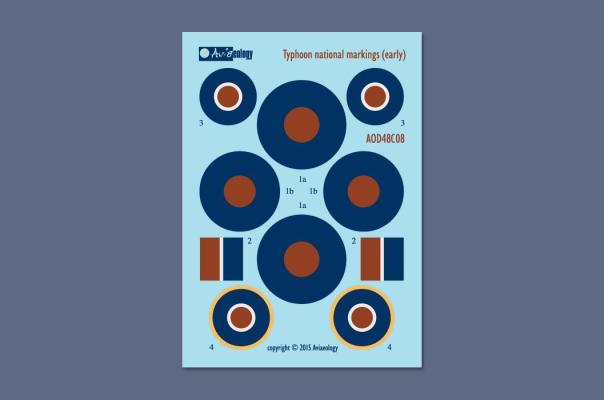
|
Typhoon Mk.Ib Early (May 1942 to January 1945) National MarkingsPublished:
The Hawker TyphoonThe Hawker Typhoon was designed as a replacement for the Hawker Hurricane, and was intended to be a medium to high altitude interceptor, However, several design problems did not permit the Typhoon to meet this requirement. Initially the Typhoon Mk Ia was fitted with twelve .303 calibre machine guns, while the later version, the Mk. Ib, was fitted with four 20 mm Hispano Mk. II cannons. Decal Sheet ContentsThe subject of this review is a decal sheet that is 2 3/4" wide by 4" long, and includes national markings for one aircraft. Two sets of top wing insignia are included, along with the fuselage side and underwing markings, as well as the fin flash. Included with the decals is an 8 1/2" by 11" sheet, printed on both sides with a 12… more |
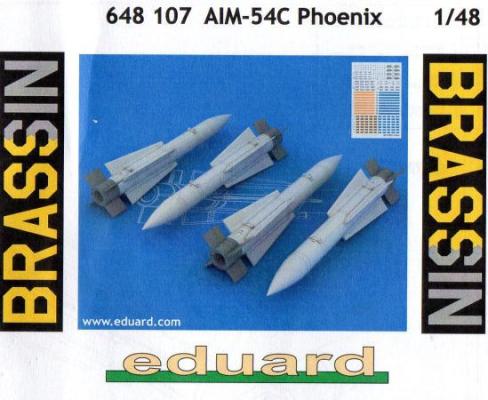
|
AIM-54C Phoenix MissilesPublished:
HistoryThe AIM-54 Phoenix is a radar-guided, long-range air-to-air missile (AAM), carried in clusters of up to six missiles on F-14 Tomcats, its only launch platform. The Phoenix was the United States' only long-range air-to-air missile. The weapons system based on Phoenix was the world's first to allow simultaneous guidance of missiles against multiple targets. Both the missile and the aircraft were used by the United States Navy and are now retired, the AIM-54 Phoenix in 2004 and the F-14 in 2006. Following the retirement of the F-14 by the U.S. Navy, the weapon's only current operator is Islamic Republic of Iran Air Force. Despite its much-vaunted capabilities, the Phoenix was rarely used in combat, with only two confirmed launches and no confirmed targets… more |
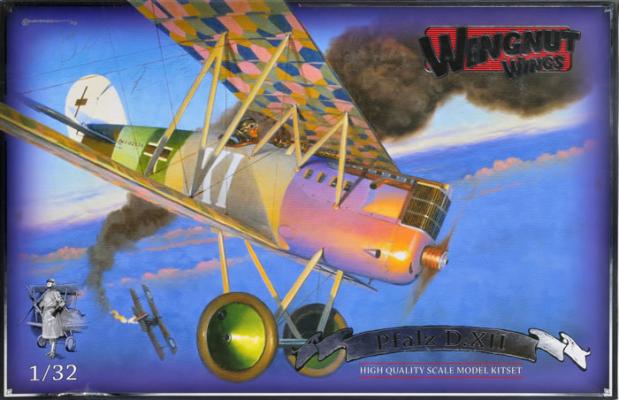
|
Pfalz D.XIIPublished:
HistoryThe Pfalz D.XII was a German World War I fighter aircraft built by Pfalz Flugzeugwerke. Designed by Rudolph Gehringer as a successor to the Pfalz D.III, the D.XII entered service near the end of the First World War. It was the last aircraft by Pfalz Flugzeugwerke to see widespread service. Though the D.XII was an effective fighter aircraft during the war, it was overshadowed by the highly successful Fokker D.VII. The D.XII began reaching the Jagdstaffeln in July, 1918. Most units operated the D.XII alongside other fighter types, but units in the quiet front area were completely equipped with the D.XII. While the D.XII was a marked improvement over the obsolescent Albatros D.Va and Pfalz D.IIIa, it nevertheless found little favor with… more |
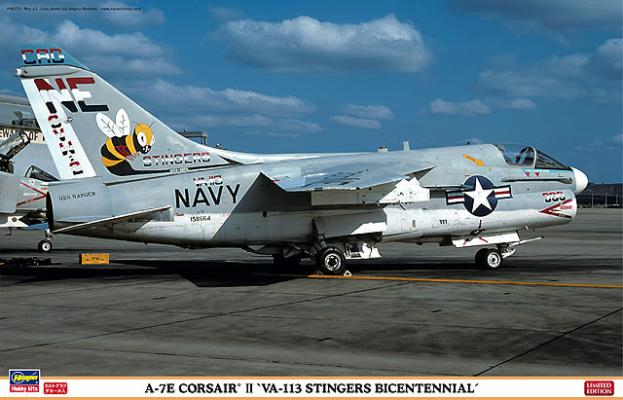
|
A-7E Corsair II VA-114 Stingers BicentennialPublished:
HistoryThe Ling-Temco-Vought A-7 Corsair II is a carrier-capable subsonic light attack aircraft introduced to replace the Douglas A-4 Skyhawk. The A-7 was one of the first combat aircraft to feature a head-up display (HUD), an inertial navigation system (INS), and a turbofan engine. In 1962, the United States Navy began preliminary work on a replacement for the A-4 Skyhawk, one with greater range and payload. Emphasis was placed on accurate delivery of weapons to reduce the cost per target. The requirements were finalized in 1963. To minimize costs, all proposals had to be based on existing designs. Vought, Douglas Aircraft, Grumman, and North American Aviation responded. The Vought proposal was based on the F-8 Crusader fighter, having a similar configuration but… more |
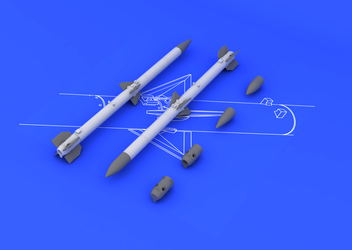
|
AIM-120C AMRAAMPublished:
BackgroundThe AIM-120 Advanced Medium-Range Air-to-Air Missile, or AMRAAM, is a modern beyond-visual-range air-to-air missile (BVRAAM) capable of all-weather day-and-night operations. Designed with the same form-and-fit factors as the previous generation of semi-active guided Sparrow missiles, it is a fire-and-forget missile with active guidance. AIM-120C deliveries began in 1996. The C variant has been steadily upgraded since it was introduced. The AIM-120C-6 contained an improved fuse (Target Detection Device) compared to its predecessor. The AIM-120C-7 development began in 1998 and included improvements in homing and greater range. It was successfully tested in 2003 and is currently being produced for both domestic and foreign customers. It helped the US Navy… more |
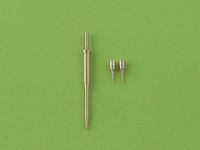
|
F-16 Pitot Tube and Angle of Attack ProbesPublished:
Three parts are included in this set: the pitot tube and two angle of attack probes. The parts are packaged in a small zip-lock bag, stapled in a folded, heavy paper stock display hanger. The parts are also further sealed in a small envelope of clear plastic film taped to a heavy card stock stiffener inside the bag. A small instruction sheet is also included that shows the installation. ApplicationThis pitot tube is designed for the Tamiya F-16. Installation is a simple matter of drilling out the opening in the kit nose part, applying a touch of super glue, inserting the pitot tube – and it is ready for paint. That simple, but what an improvement over the kit pitot tube! Same goes for the AOA probes mounted on either side of the nose, except here the probes… more |
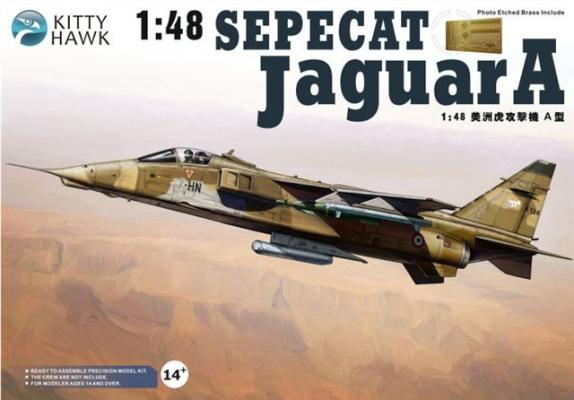
|
SEPECAT Jaguar APublished:
History – The SEPECAT Jaguar is an Anglo-French jet ground-attack aircraft, originally used by the British Royal Air Force and the French Armée de l'Air in the close air support and nuclear strike role, and remains in service with several export customers, notably the Indian Air Force and the Royal Air Force of Oman. Originally conceived in the 1960s as jet trainer with a light ground attack capability, the requirement for the aircraft soon changed to include supersonic performance and reconnaissance and tactical nuclear strike roles. A carrier-based variant was also planned for French service, but this was cancelled in favor of the cheaper Dassault Super Étendard. The airframes were manufactured by SEPECAT (Société Européenne de Production de l'… more |
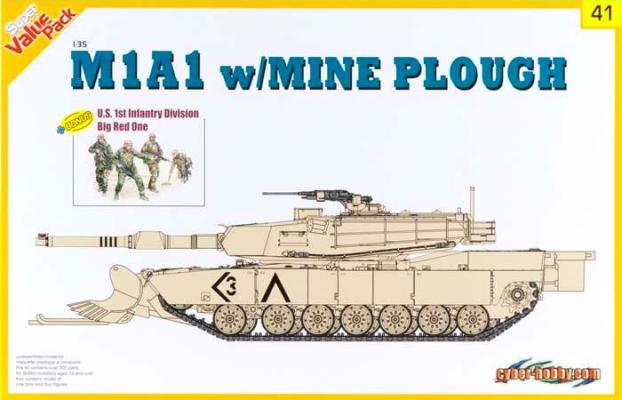
|
M1A1 Abrams with Mine PloughPublished:
HistoryThe M1 Abrams is a third-generation main battle tank named after General Creighton Abrams, former Army Chief of Staff and Commander of US military forces in Vietnam from 1968 to 1972. Designed for modern armored warfare, the M1 is highly mobile, well armed, and heavily armored. Features include a gas turbine engine usually fueled with JP8 jet fuel, composite armor, and separate ammunition storage in a blow-out compartment. Weighing nearly 68 tons, it is one of the heaviest main battle tanks in service. The M1 Abrams entered service in 1980, replacing the M60 tank. The M1 remains the principal main battle tank of the United States Army and Marine Corps, and the armies of Egypt, Kuwait, Saudi Arabia, Australia, and Iraq. Three versions of the M1 Abrams… more |
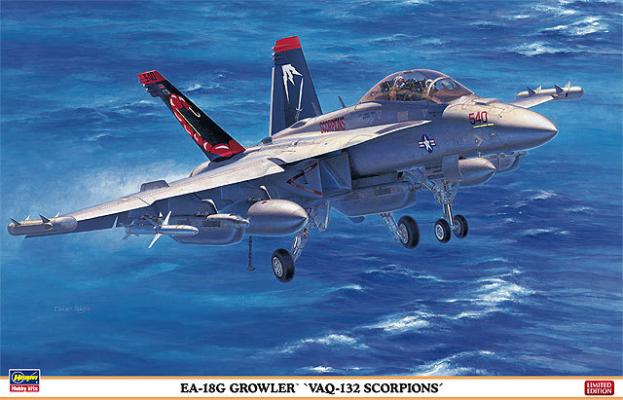
|
EA-18G Growler VAQ-132 ScorpionsPublished:
HistoryThe Boeing EA-18G Growler is a carrier-based electronic warfare aircraft, a specialized version of the earlier two-seat F/A-18F Super Hornet. The EA-18G replaces the EA-6B Prowlers in service with the United States Navy. Production for the EA-18G began in 2007 and the aircraft entered operational service in late 2009. The first Growler for fleet use was accepted by VAQ-129 "Vikings" at NAS Whidbey Island, in June 2008. At the time, the Navy planned to buy approximately 85 aircraft to equip 11 squadrons. The EA-18G completed operational evaluation in late July 2009. In August 2009, EA-18G Growlers from Electronic Attack Squadron 129 (VAQ-129) and Electronic Attack Squadron 132 (VAQ-132) completed their first at-sea carrier-arrested landing aboard the USS Harry… more |
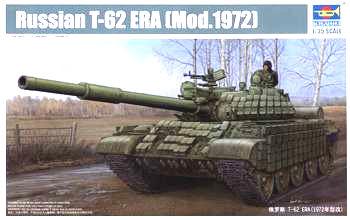
|
Russian T-62 ERA Mod 1972Published:
HistoryThe T-62 is a Russian main battle tank, a further development of the T-55. Its 115mm gun was the first smoothbore tank gun in use. The T-62 was produced between 1961 and 1975. It became a standard tank in the Soviet arsenal, partly replacing the T-55, although that tank continued to be manufactured in the Soviet Union and elsewhere after T-62 production was halted. The T-62 was later replaced in front-line service by the T-72. The T-62 has a typical tank layout: driver's compartment at the front, fighting compartment in the center, and engine compartment in the rear. The four-man crew consists of the commander, driver, gunner, and loader. Although the T-62 is very similar to the T-55 and makes use of many of the same parts, there are some differences. Those… more |
